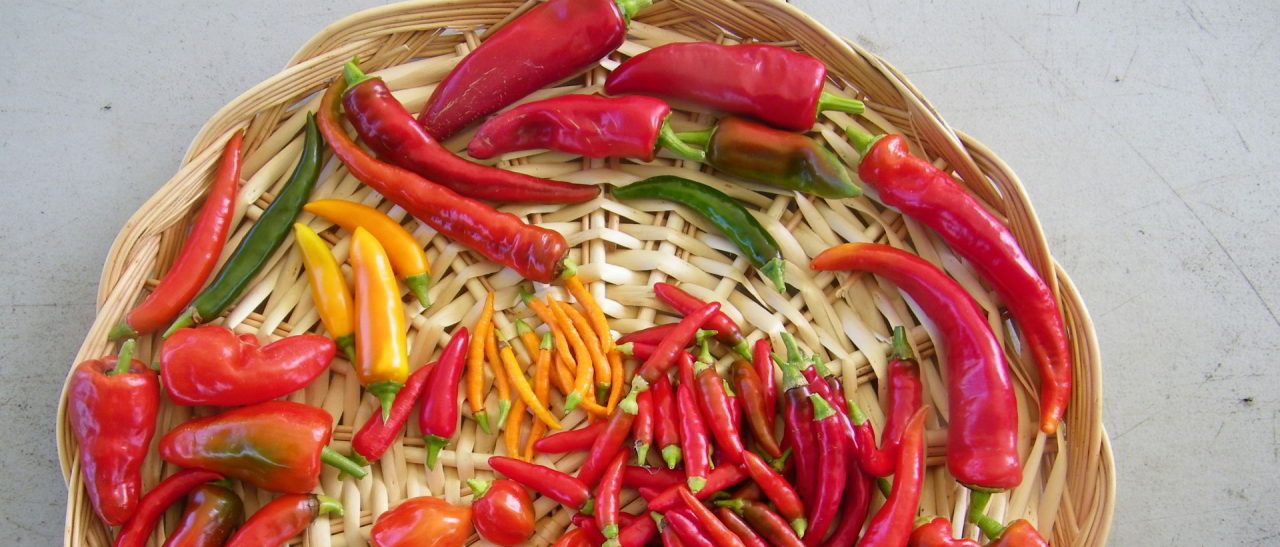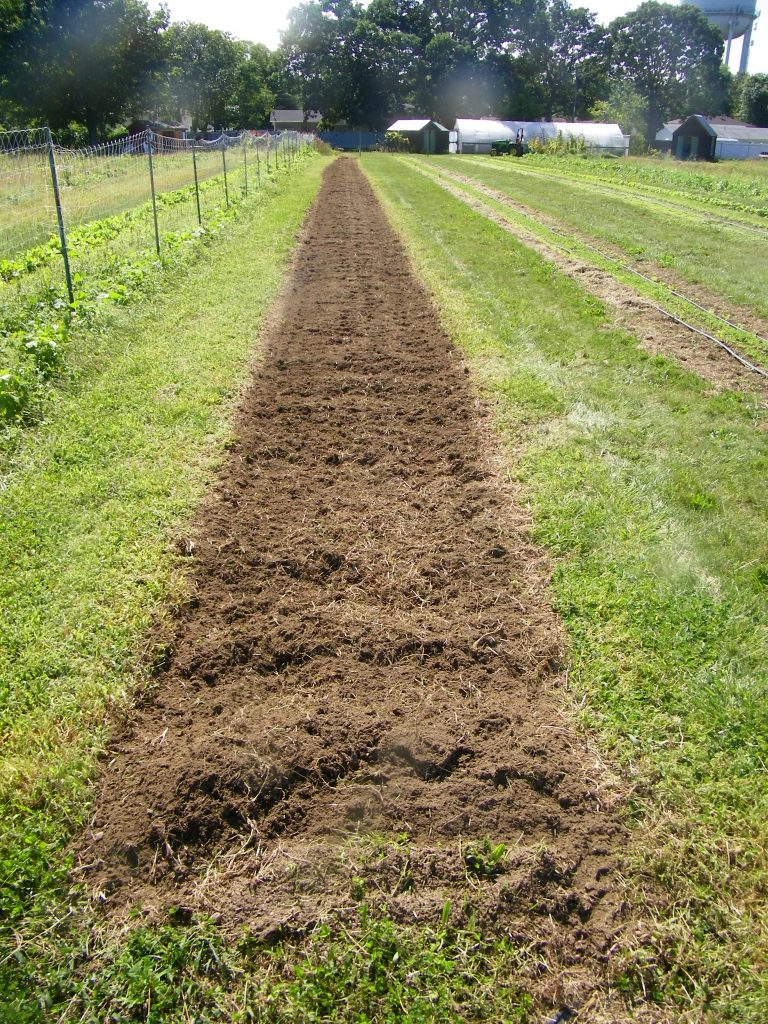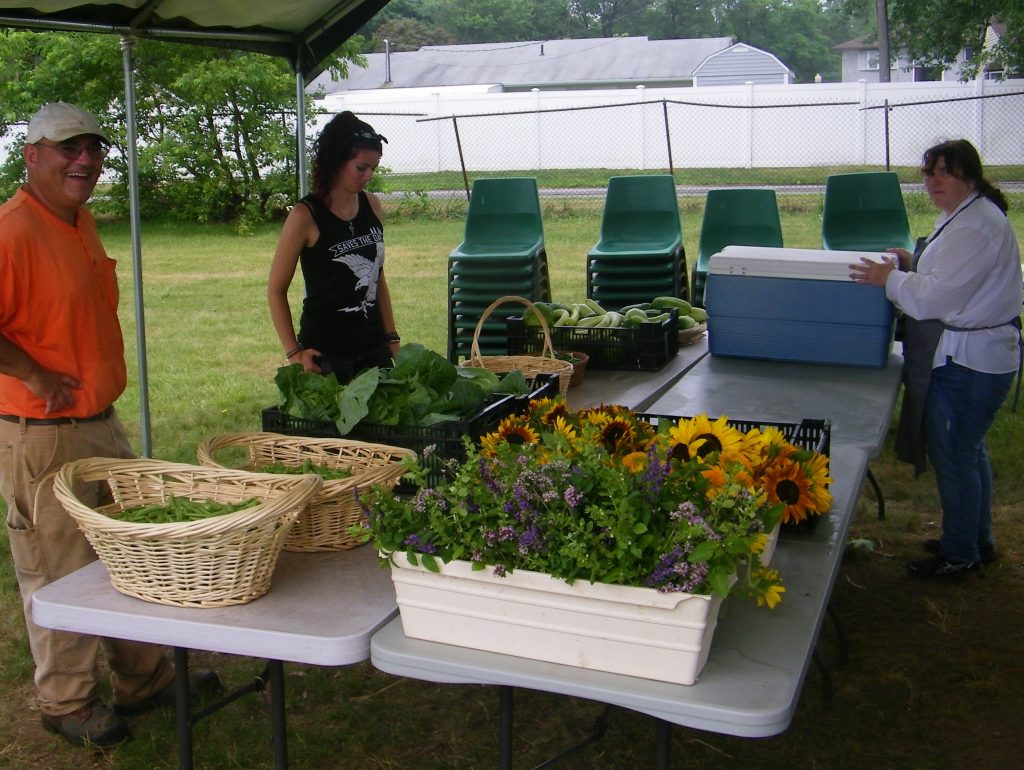We arrived at Homecoming farm for our weekly Tuesday visit for our work/share commitment. Our two hours of work usually involves weeding. Although there’s been a drought all summer, Don had laid out irrigation tape at the end of our work assignments, we gather at the pickup tent to take our share. This week it was big.
Strong northeasterly winds, a sprinkle and clouds covered the 50 beds and building area. I joined Mitch and Don at the raspberry bushes. “This isn’t the proper soil for raspberries.” Said Don. “I’ve seen blueberries in the pine barrens sandy soils that are loaded.” I chimed in.
Don asked me to weed the artichoke bed after I pointed out horseweed. It can grow as high as a horse, is long and skinny, and is one of two major weeds who have taken advantage of the irrigation tape. The other is rag weed. I got to work.” Having grown artichokes in Manorville, I knew that the later you harvest, the tastier the tubers are.
“Wait till the last pickup at the end of November.” I suggested.
I began weeding. The strong wind gusts rustled the sandpaper leaves and bent the stalks. I pulled and tossed, sometimes high enough for the wind to carry one 25 feet. I guessed 40MPH in the wake of Hermine.
Having finished I walked past the garlic shed and peeked in. I saw dozens of trays with white garlic bulbs of over 20 varieties. Fresh dug bulbs are hung in the shed for a month to cure. Then a group processes them. The stalks are cut off, the bulbs brushed of dirt, and the roots cut off. Don grows 15,000 garlic plants. These bulbs will supply the next planting event in mid-November. In month, the garlic shed will be empty. Another group will separate the bulbs into cloves. Don will select the biggest cloves for seed. When planting begins, three 200 foot-long strings are set in place. The soil is furrowed and cloves are placed pointed side up. Before covering, fish oil emulsion solution is sprinkled.
Two women were weeding in the flower bed nearby. I offered to cart the weeds to the compost pile. The pile is so huge, Don used the tractor scoop to bury and mix. I paused to check out the tallest pig weed I’ve ever seen. A seven foot weed can easily grow because the compost soil is rich in nutrients.
When it’s time to pick up the harvest, we gather at the pickup tent to check out the list of items and numbers and weights: the list below gives you the idea of what a good deal shareholders have:
- large bloc choy
- 1 bunch kale
- 1 bunch Swiss chard
- 2 pounds potatoes
- 6 pounds red tomatoes
- 2 pounds Roma tomatoes
- 2 pounds cherry tomatoes
- 2 pounds multi-colored tomatoes
- 1 cucumber
- 1 bag eggplant and pepper
- 1 bunch cut flowers
- 1 bunch herb sprigs
- 1 bunch leeks
- 3 bunches radishes
- As many hot peppers as you want
Don set up three trays of hot peppers. They have exotic colors, shapes and sizes.
There are about 8 more pickup days to go this year. I think it’s fair to say that the time we spend on the farm are happy. We cooperate, we laugh, we talk and are close to the soil, the open sky, and shade. The abundance goes way beyond the vegetables we bring home. The pickup tent brings us the feeling of community, of being home, right in our Long Island back yards.




Leave a Reply